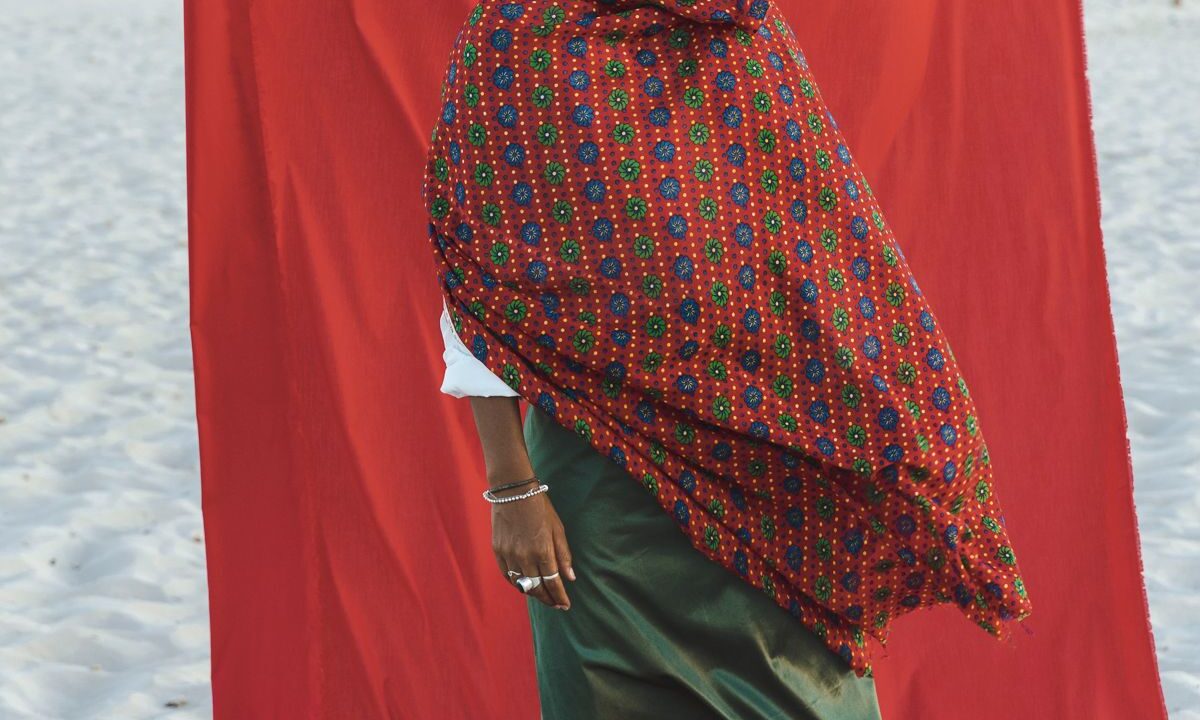Words and photos by Ainhoa Ezkurra Cabello
This year marks fifty years since Spain withdrew from Western Sahara. The wound remains open. The Sahrawi people continue to live in exile and scattered around the world, denied their right to self-determination and sovereignty.
The project Mtmarfga grew out of long conversations with Mulaha. She represents the experience of many Sahrawis in the diaspora, highlighting their ongoing invisibility in the media and in public consciousness.
A travel document issued under the 1954 United Nations Convention is an identity paper that allows stateless people to travel internationally when they cannot get a passport from their home country.
Blurred identity.
Mulaha came to Spain as a child through Vacaciones en Paz, a humanitarian program that for decades has enabled Sahrawi children to spend summers with Spanish families, offering them care and a different experience from life in the refugee camps. What started as a temporary stay became a permanent turning point in her life.
A childhood photo of Mulaha placed on the flag of Western Sahara.
A detail shows fingers emerging through a torn map of the Atlantic, pointing toward northwest Africa.
Her personal story reflects a collective one: that of a dispersed, fragmented, and largely unseen community living between memory and the present. Although Mulaha has spent most of her life in Spain, she remains stateless—a status that means not only lacking legal recognition but also missing a nationality that guarantees basic rights others take for granted. Inside her coexist the country where she lives and the one that lives on in her language, memories, and roots. Next year, after twenty-four years, Mulaha will finally receive a Spanish passport, which will allow her, among other things, to travel freely.
A poem from the book Devenir Seiba by Sahrawi writer Tfarrab.
Mtmarfga means “relaxed” in Hassaniya, an Arabic dialect spoken by the Sahrawi people. It refers to the way women recline at home—a simple gesture that here symbolizes persistence, resistance, and visibility. The project gives voice to this quiet existence, showing that despite hardship, the Sahrawi people endure, reclaiming their memory, identity, and right to be seen.
“Those who try to occupy the desert will be swallowed by the sand.”
Nationality: Stateless
When I asked her:
—Where would you like to go once you get Spanish citizenship?
She replied:
—Honestly, I haven’t thought about it, but without a doubt I want to explore Africa.
Mtmarfga
Mulaha Focu Yuli (29)
About the artist
Ainhoa Ezkurra (1988) is a Spanish visual artist based between Barcelona and Formentera. With a background in cinematography, she works on independent and editorial projects, focusing on empathetic portraiture, traditions, and social change. Her photography explores stereotypes, collective memory, and diverse identities, finding humanistic beauty in everyday moments.
Frequently Asked Questions
Of course Here is a list of helpful and clear FAQs about Mtmarfga by Ainhoa Ezkurra Cabello
General Beginner Questions
1 What is Mtmarfga
Mtmarfga is a conceptual artwork created by the artist Ainhoa Ezkurra Cabello It often explores themes of identity language and the systems that structure our perception of reality
2 What does the word Mtmarfga mean
The word itself is not a standard word in any language Its a constructed term likely intended to provoke thought about how we assign meaning to symbols and sounds and to challenge our automatic desire for definition
3 What kind of art is it Is it a painting a sculpture or something else
It is primarily a conceptual piece It might be presented through various mediums like text installation digital media or performance depending on the specific exhibition The idea behind it is the core of the artwork
4 Who is Ainhoa Ezkurra Cabello
Ainhoa Ezkurra Cabello is a contemporary artist known for her work that often intersects language code and philosophy to question and deconstruct established social and technological systems
Deeper Understanding Interpretation
5 What is the main idea or message behind Mtmarfga
The main idea is to make us question how we understand and communicate It asks us to consider what happens when language breaks down or becomes unfamiliar and how meaning is constructed rather than inherent
6 Is there a correct way to interpret Mtmarfga
No there isnt a single correct interpretation The artwork is designed to be openended Your personal interpretation and the thoughts it triggers in you are a valid part of the experience
7 How is Mtmarfga related to technology or code
The artist often works with themes of digital language and code Mtmarfga can be seen as a parallel to computer codea string of characters that only makes sense if you understand the system it operates in
8 What are the benefits of engaging with an artwork like this
It helps develop critical thinking challenges your preconceptions about communication and encourages a more active and thoughtful engagement with art and the world around you
Practical
